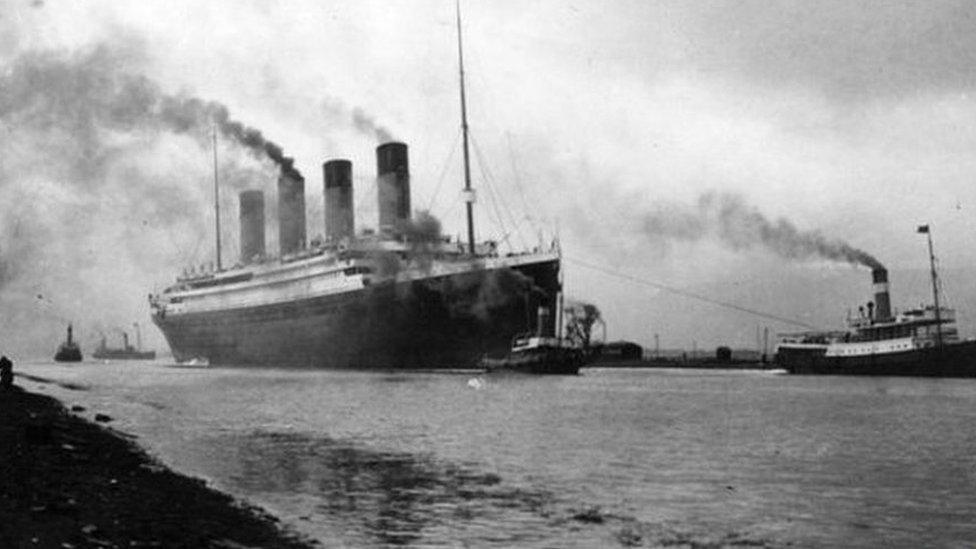Titanic gold pocket watch sells for £900,000

The gold watch belonging to Mr J.J. Astor sold for £900,000
- Published
A gold pocket watch worn by the wealthiest passenger on the Titanic has sold for six times the asking price, fetching £900,000.
The watch belonged to businessman John Jacob Astor and was estimated to sell for £150,000 when it went under the hammer in Wiltshire.
It equalled another Titanic artefact but when taxes and fees are taken into account, the buyer will pay £1.175m. Auctioneer Andrew Aldridge described the total cost as a "world record".
The previous highest amount paid for a Titanic artefact was for a violin that also sold for £900,000, but which with taxes and fees at the time took it up to £1.1m.
This means the watch is now the highest amount ever paid for a single item from the doomed liner.
Titanic folklore
A violin case belonging to the man who led the orchestra on the deck as the ship went down in 1912 also fetched £290,000, or £366,000 when taxes and fees are added, at the auction earlier.
The two pieces of maritime memorabilia were part of a sale in Devizes of more than 280 lots relating to ocean liners.
Titanic was sailing from Southampton to New York when it hit an iceberg in the North Atlantic on the night of 14 April 1912. It sank with the loss of more than 1,500 lives.
The disaster is one of the most infamous in maritime history, inspiring books, plays, songs and Hollywood films.
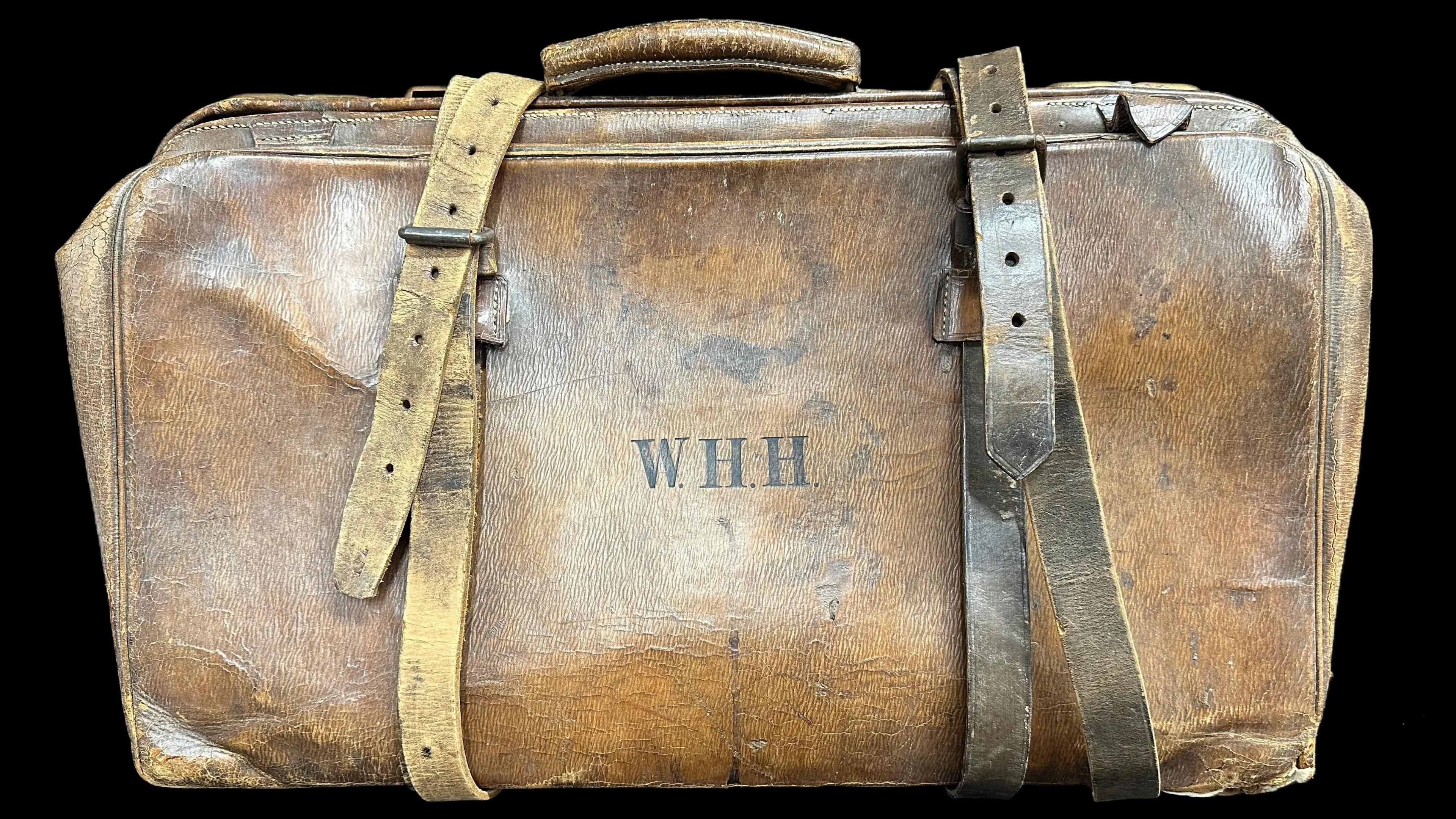
The bag belonged to Wallace Hartley, who famously played his violin to calm passengers as the ship sank
The watch and the brown leather violin bag belonged to two people who became enshrined in Titanic folklore.
Mr Astor, 47, went down with the ship, after putting his young wife Madeleine into a lifeboat and smoking a last cigarette.
While Wallace Hartley, from Colne in Lancashire, and his eight-piece band famously "played on" to calm passengers as the disaster unfolded around them.
Both items were retrieved when the bodies of their owners were recovered from the water.
"Unlike many timepieces from the Titanic, which are frozen in time on the fateful night, the watch was restored and worn by Mr Astor's son, Vincent," said David Beddard, chairman of the British Titanic Society.
"To be able to see J.J. Astor's watch, knowing it was in his pocket as he put his young, pregnant bride in a lifeboat and stepped back, knowing he wasn't going to survive, is remarkable," he added.
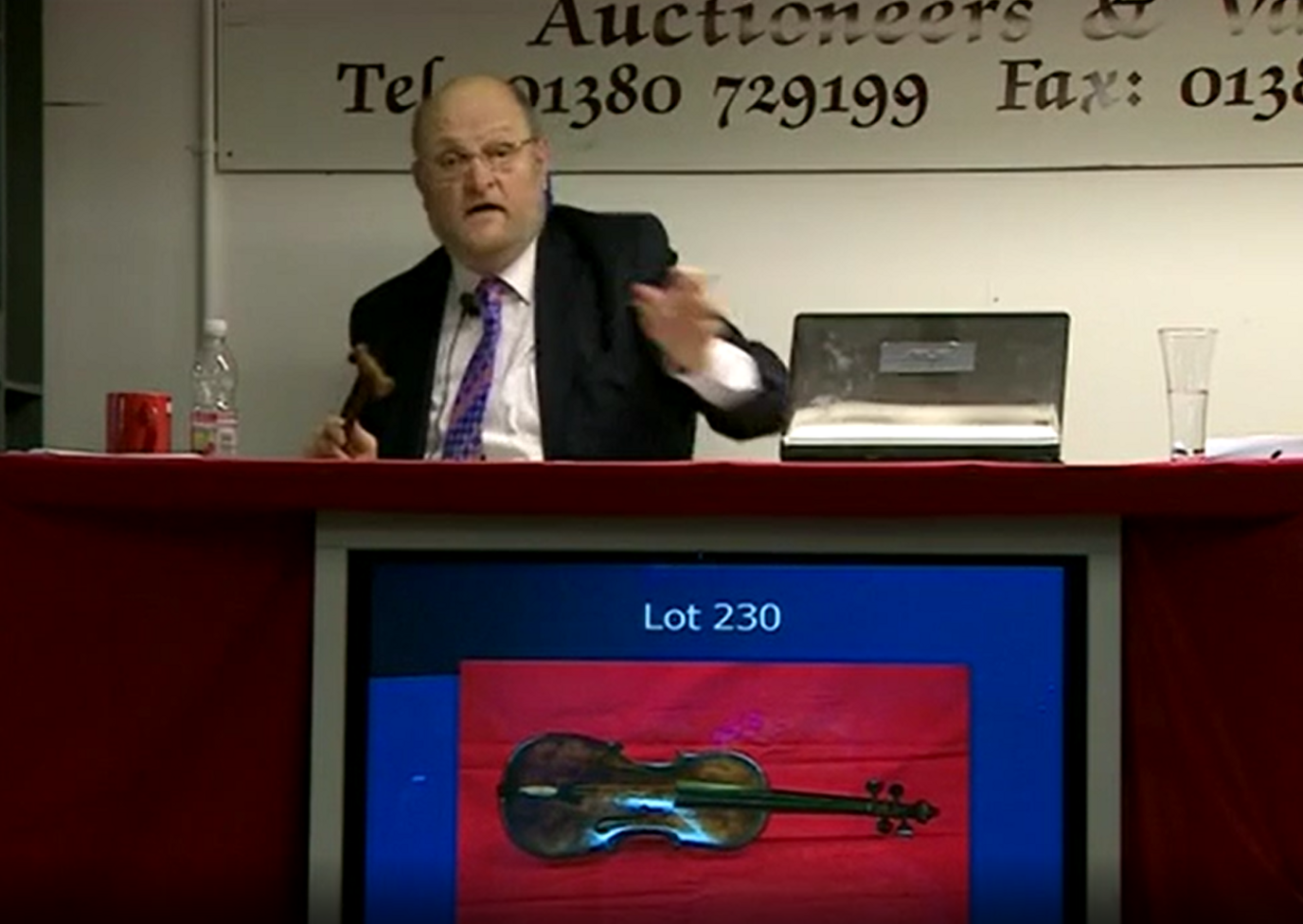
The famous violin was sold separately at auction in 2013
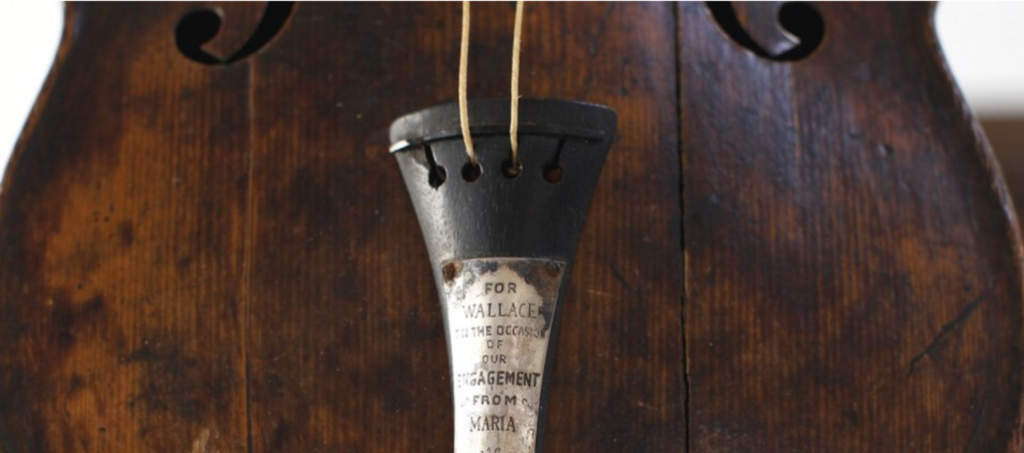
Wallace Hartley's violin fetched £900,000 at auction more than 10 years ago
Mr Hartley went down with the ship, but not before he put his violin back in its leather valise, which he strapped to himself, possibly for buoyancy.
Days after the sinking, Mr Hartley's body was recovered with the bag still attached to him.
"The valise survived quite well, although water-damaged," said Mr Beddard.
"Many tests were carried out over the course of about five or six years before the violin and case were validated.
"The recovery of items from victims' bodies is always a contentious issue when it comes to collecting.
"However, we're very lucky with the Titanic community that even when items such as these are purchased by individuals, be they millionaires or just ordinary people, they seem to be very generous and they lease or loan these artefacts to go on display."
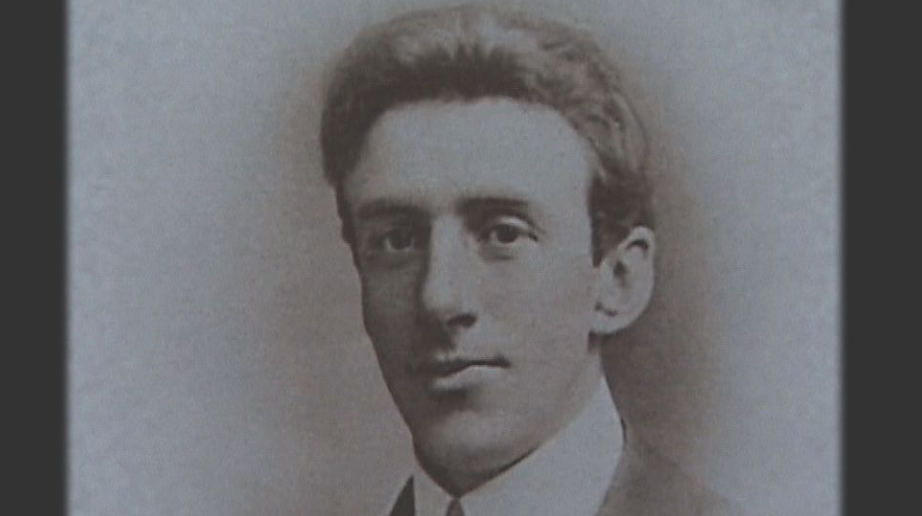
Wallace Hartley's body was recovered from the sea with the violin case strapped on to him
Mr Aldridge, managing director at Henry Aldridge & Son in Devizes, said: "You've got over 2,200 people on that ship, so you have over 2,200 subplots and 2,200 chapters to the story.
"Each one of those people had an individual tale to tell.
"We are fascinated in her because of who was on board.
"You could argue that Titanic is the most famous ship that's ever sailed."
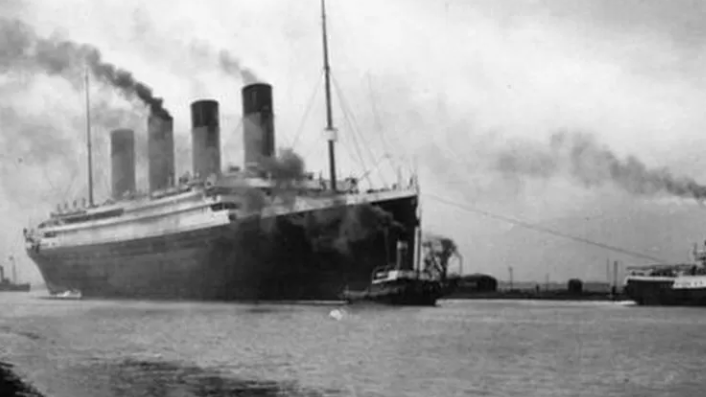
The Titanic sank on the night of 14 April 1912, with the loss of more than 1,500 lives
The violin, considered to be the "rarest and most iconic piece" of Titanic memorabilia, according to Mr Aldridge, was auctioned separately in 2013 and sold for a then record price of £900,000.
The bag and watch were auctioned alongside a rare order of service for Mr Hartley's funeral that was held on 18 May 1912 in Colne, Lancashire.
Follow BBC Wiltshire on Facebook, external, X , externaland Instagram, external. Send your story ideas to us on email, external or via WhatsApp on 0800 313 4630.
Related topics
- Published5 November 2023
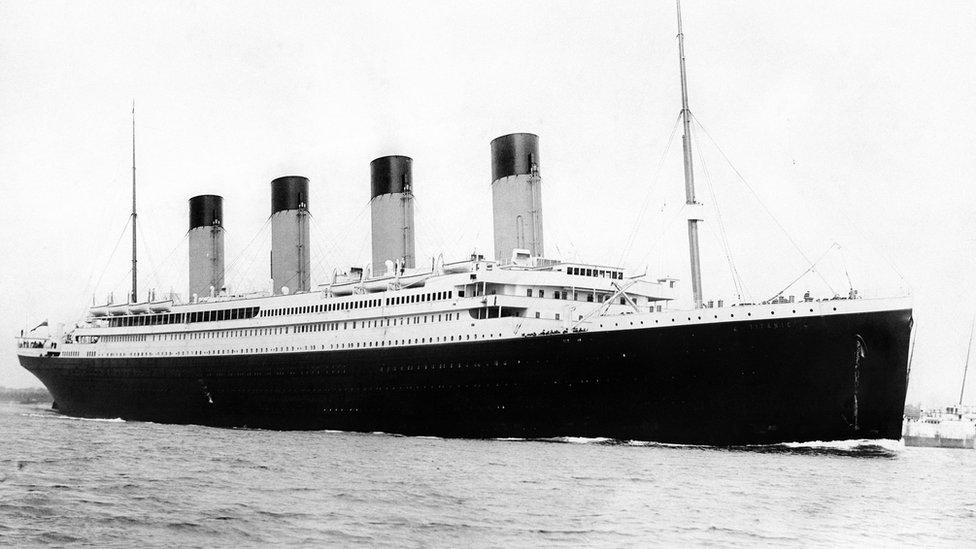
- Published12 February 2024

- Published15 April 2023
